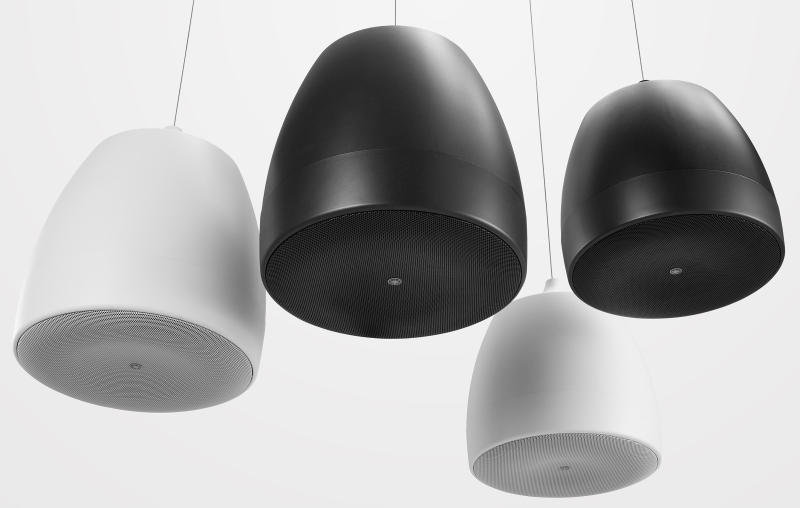Yamaha VXH Series

Yamaha’s new VXH series combines high quality music reproduction with exceptional design, bringing enhanced audio to a wide range of commercial spaces where pendant speakers are the preferred solution.
Delivering superior sound in many larger retail, hospitality, entertainment and corporate premises can be a challenge with conventional surface mount or in-ceiling speakers. Pendant speakers are often a better solution, delivering more localised sound to reduce the issues of reverberation, unwanted reflections and the resulting lower-quality audio, which speakers located further away from the listener can cause.
Suitable for high, open structure and sloped ceilings, the VXH series comprises two models, the VXH6 and VXH8, engineered for optimum background music and voice reproduction.
Featuring a 120º dispersion pattern, the 6.5-inch VXH6 has a peak power handling of 300W and is designed for use where the speakers are to be suspended at a relatively low level. The eight-inch VXH8 has a narrower dispersion pattern of 75º and a higher peak power output of 360W, for higher suspended positions. You can mix and match both models, as well as with other speakers in the comprehensive Yamaha range, to achieve the best sound and coverage for any application.
Weighing just 5.7kg and 7.2kg respectively, The VXH6 and VXH8 support high and low impedance connections, while the speaker wattage can be easily switched even after installation, thanks to the straightforward tap selector. This minimizes the need for additional units, letting you design systems to precisely meet the needs of a space.
VXH series speakers are IP45-rated for use in a wide range of environments, including outdoors, and are supplied with a Gripple suspension hardware and wire kit for easy, safe height adjustment during installation. However, the VXH series is not designed for use in humid environments.
The enclosures feature a pleasing ergonomic, low impact design, the compact circular shape making them less visibly intrusive from below. Both models are supplied in either black or white finish, the magnetic speaker grille has a contoured profile and is paintable to match any interior décor.
Both models can be used to create bespoke installations for a wide range of spaces, from the high open structure ceilings of warehouse stores and distribution centres, to spaces with sloped ceilings like amusement facilities, gymnastic halls and design-conscious environments like clothing stores, larger restaurants and more.
“We are very pleased to announce the addition of VXH series speakers to our acclaimed Commercial Installation Solutions lineup,” says Thomas Hemery, General Manager, Yamaha Pro Audio Marketing and Sales Department.
“Over the years we have progressively expanded our speaker ranges to satisfy a wide variety of applications and aesthetics. Although we have received very positive reviews for our extensive lineup of products, high quality pendant speakers have always been a much-requested addition.
“As with all our professional audio products, Yamaha is committed to delivering only the best solutions. So our R&D team took the time to develop a pendant speaker that we were certain would satisfy the most demanding standards of installers and their customers. We are happy to announce a product that surpasses those standards.
“The VXH series fills a gap in our range that means Yamaha speakers can be used in system designs for large spaces and open structures with high or sloped ceilings, which have been difficult to satisfy in the past, while embodying the philosophies of quality and reliability that we stand for.”
 How to resolve AdBlock issue?
How to resolve AdBlock issue?